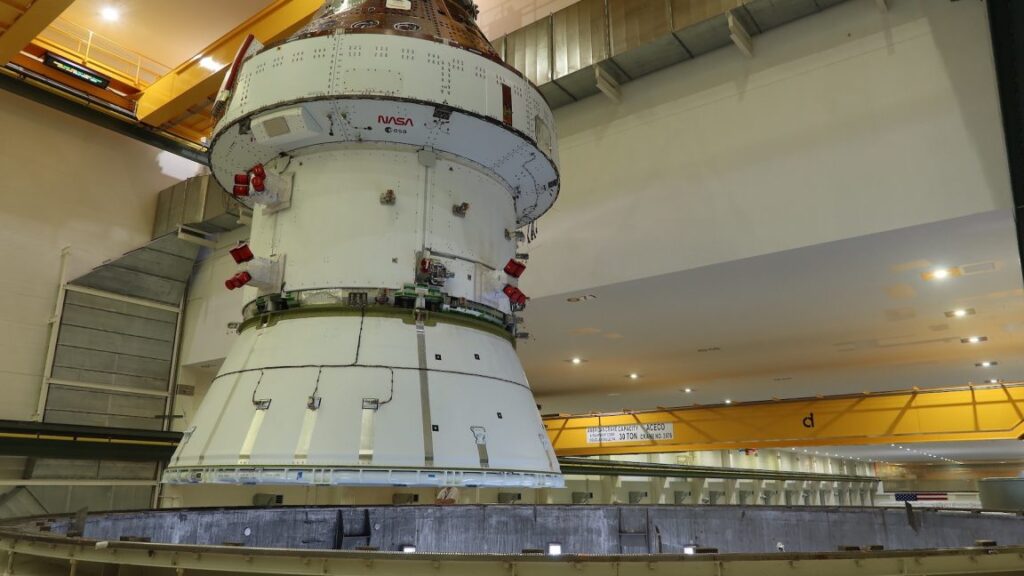
“Every one of our conclusions, every one of our recommendations, was unanimously agreed to by our team,” Hill said. “We went through a lot of effort, arguing sentence by sentence, to make sure the entire team agreed. To get there we definitely had some robust and energetic discussions.”
Hill did acknowledge that, at the outset of the review team’s discussions, two people were opposed to NASA’s plan to fly the heat shield as is. “There was, early on, definitely a difference of opinion with a couple of people who felt strongly that Orion’s heat shield was not good enough to fly as built,” he said.
However, Hill said the IRT was won over by the depth of NASA’s testing and the openness of agency engineers who worked with them. He singled out Luis Saucedo, a NASA engineer at NASA’s Johnson Space Center who led the agency’s internal char loss investigation.
“The work that was done by NASA, it was nothing short of eye-watering, it was incredible,” Hill said.
At the base of Orion, which has a titanium shell, there are 186 blocks of a material called Avcoat individually attached to provide a protective layer that allows the spacecraft to survive the heating of atmospheric reentry. Returning from the Moon, Orion encounters temperatures of up to 5,000° Fahrenheit (2,760° Celsius). A char layer that builds up on the outer skin of the Avcoat material is supposed to ablate, or erode, in a predictable manner during reentry. Instead, during Artemis I, fragments fell off the heat shield and left cavities in the Avcoat material.
Work by Saucedo and others, including substantial testing in ground facilities, wind tunnels, and high-temperature arc jet chambers, allowed engineers to find the root cause of gases getting trapped in the heat shield and leading to cracking. Hill said his team was convinced that NASA successfully recreated the conditions observed during reentry and were able to replicate during testing the Avcoat cracking that occurred during Artemis I.